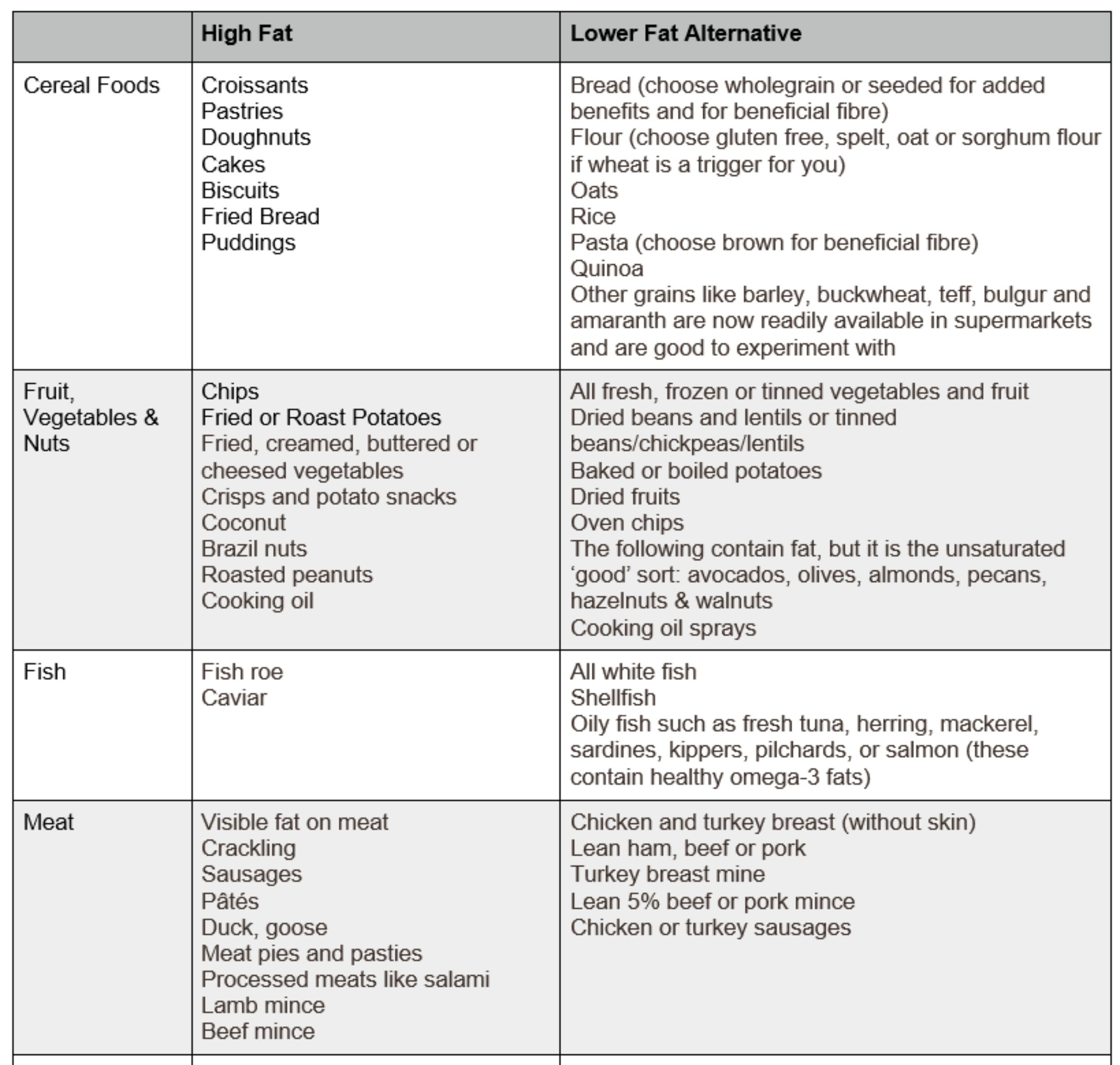A low Fat Diet
Let's look at what a low fat diet realistically means.
NHS guidelines suggest that to maintain body weight your total fat intake ought to be in the range of making up 30% of your total daily calorie intake. As you can see in the table above this would mean for an average women she could eat up to 65g of fat daily which equates to 30% of her total recommended daily calories of 2000.
To convert this to a low fat diet it is suggested that you lower the percentage level of fats in your diet from 30% to 20% equally 40g of fat per day instead of 65g. How easy is this to do?
Thanks to the new colour-coded system of food labelling on the front of packs we can quickly see at a glance what key nutrients and calories a food contains; foods with over 17.5g fat per 100g (17.5% fat) would be red, those between 3 and 17.5% would be amber and those with under 3% would be green. A food can be labelled as fat free if it contains less than 0.5%.
Here are a couple of examples:
A 'healthy living' ready meal of beef lasagne has a green traffic light for fat content at 8.4g per pack or 12% of your RDI compared to a standard version which has a red traffic light for fat content at 23.7g per pack or 34% of your RDI. It is easy to understand which meal offers you the lowest fat alternative.
The below list gives you a guideline of higher fat foods (that we all love!) and their lower fat alternatives. It might be a good idea to try swapping some of your higher fat options for lower fat ones and I would personally suggest starting with dairy products. They contain the highest percentage of fat per food group so you will be instantly dropping your total fat content significantly.
For example you can easily replace cream, creme fraiche, yogurts, ice cream, milk and cream cheese with perfectly tasty low or zero fat alternatives. You might need to get used to them at first but they are pretty easy swaps to achieve for most people.
I would also like to add to this list other general exclusions like processed meals and take away foods (sadly!):
- Processed meals are now easier to choose from because of the new traffic light nutritional breakdown on the front of the package. Look at the fat light and if it's green then it's low in fat and will probably be ok but amber or red lights are a no-go. However do be aware if any of the lights are red (sugars/salt for example) then it's not going to be a particularly 'healthy' regardless that if it's low in fat. Also some processed foods contain sorbitol which can have a laxative effect and make your diarrhoea worse.
- Take-away food is generally going to be a trigger for most BAM sufferers. Fish and chips, KFC or Macdonalds are all fried in oil, Chinese and Indian food are often loaded with butter and oil, Pizza is always covered in full fat cheese….the list goes on. If you are tempted to eat take away food try to make good choices where possible, double up on your meds and/or be prepared for some worsening of symptoms.







